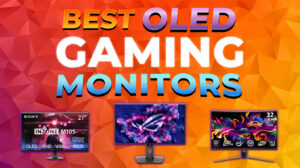7 Best MacBooks To Buy in 2025
Eneba Hub contains affiliate links, which means we may earn a small commission if you make a purchase through them—at no extra cost to you. Learn more
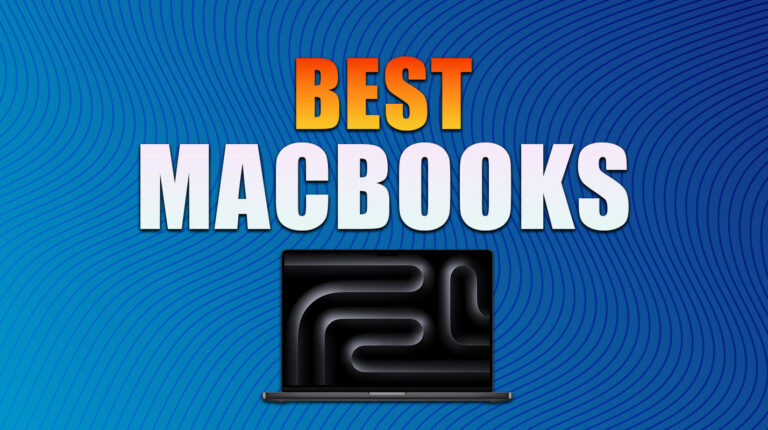
The best MacBook isn’t just for designers or executives anymore. Apple’s lineup now fits students, remote workers, and anyone who needs a solid laptop that won’t slow down mid-task.
Still, it’s easy to get lost in the lineup. Some models look the same, others share a price tag but serve different needs. So I asked a few Apple-loving friends to help me break it down.
Below is a clear guide, sorted by use case, budget, and performance, to help you skip the confusion and pick the MacBook that actually fits your life.
Jump to:
Our Top Picks for MacBook
I know it’s easy to feel overwhelmed by Apple’s lineup, so I’ve narrowed things down to three models that make the most sense right now. They’re reliable, well-tested, and show up in real-life setups from students, freelancers, and full-time creatives alike.
- MacBook Air M4 (13-inch) – If you just want something that works – without digging through chip charts or spec sheets – this is your best bet. The M4 Air handles everything from everyday work and Google Meet calls to light video edits without breaking a sweat. It boots fast, stays cool, and feels incredibly light in a backpack or tote. The battery goes the distance, and the design still looks like something fresh off an Apple keynote. For most people, this is the sweet spot.
- MacBook Pro M4 (14-inch) – This MacBook Pro M4 is perfect for those cutting content in Final Cut, producing tracks in Logic, or doing serious 3D work. Apple’s M4 chip doesn’t just fly – it stays stable under pressure. The screen is stunning, colors are accurate, and the whole setup is built for deep creative workflows.
- MacBook Air M1 (13-inch) – Want a solid Mac without spending more than you need to? The M1 Air still delivers. You get a quiet, fanless experience, buttery-smooth everyday performance, and a battery that lasts all day. It’s the easiest entry point into macOS – and still a great one.
Best MacBook: 7 Models That Actually Make Sense in 2025
Choosing your first MacBook, or upgrading an older one, shouldn’t feel like a research project. I’ve narrowed it down to 7 models that actually make sense in 2025. If you’re after clarity, value, or sheer power, here’s where the best MacBook options live.
1. Apple MacBook Air (13-inch, 2025) [Best Overall]
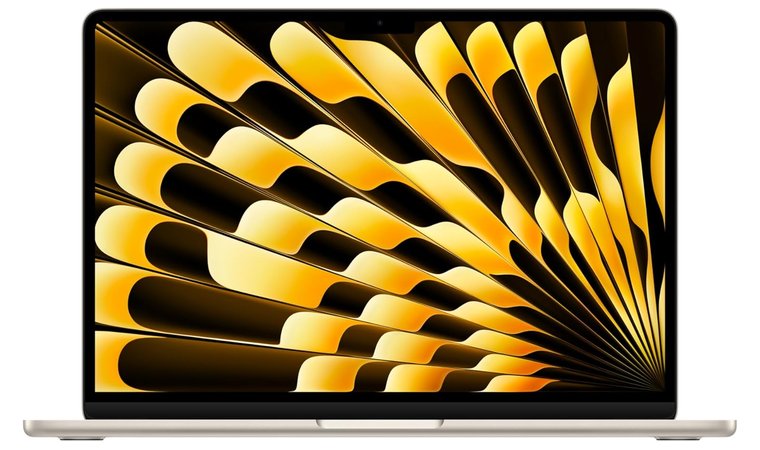
| Specs | Details |
|---|---|
| CPU | Apple M4 chip with 10-core CPU |
| GPU | 10-core integrated GPU |
| RAM | Up to 32GB unified memory |
| Display | 13.6-inch Liquid Retina (2560×1664) |
| Storage | Up to 2TB SSD |
| Battery | Up to 18 hours |
| Weight | 2.7 pounds (1.24 kg) |
The MacBook Air (13-inch, 2025) raises the bar for what an everyday laptop should feel like. This is one of those MacBook Air models that makes you forget you’re using a thin-and-light machine, thanks to the M4 MacBook chip baked inside. Everything runs effortlessly, from jumping into calls to spinning up AI tools on the fly. This model is often considered the best Mac laptop for users who want a powerful machine without breaking the bank.
You also get upgraded Wi-Fi 6E support, which keeps online workflows smoother and more reliable, especially in crowded networks. The keyboard and trackpad feel refined too (tactile, precise, and consistent during long sessions).
This is Apple’s ultimate crowd-pleaser: ultra-slim, quiet, and fast. The battery life is excellent, and often lasts up to 18 hours without needing a charge. And it doesn’t just sip power. It also stays cool, silent, and steady no matter how many tabs or tasks you throw at it.
It’s also great for users dabbling in AI workflows or app prototyping. You’ll be surprised by how much this little machine can handle before showing any strain.
Design-wise, you’re getting that iconic sleek form factor. It weighs under 3 pounds, slides easily into any bag, and includes a MagSafe port that snaps into place without fuss. With a new sky blue color option to the mix, you’ve got a head-turner without being flashy.
| Pros | Cons |
|---|---|
| ✅Silent performance thanks to the M4 MacBook chip ✅Battery life that holds up for full-day work and more ✅Fanless build makes it whisper-quiet ✅MagSafe charging port adds safety and ease ✅Vivid Retina display, great for photo and video editing ✅Lightweight, ultra-portable chassis | ❌ The display looks sharp but still lacks ProMotion |
Final Verdict: The 2025 Apple MacBook Air is a fantastic laptop that gets everything right, from design and performance all the way to user experience.
2. Apple MacBook Air (13 Inch, 2024) [Best Budget]
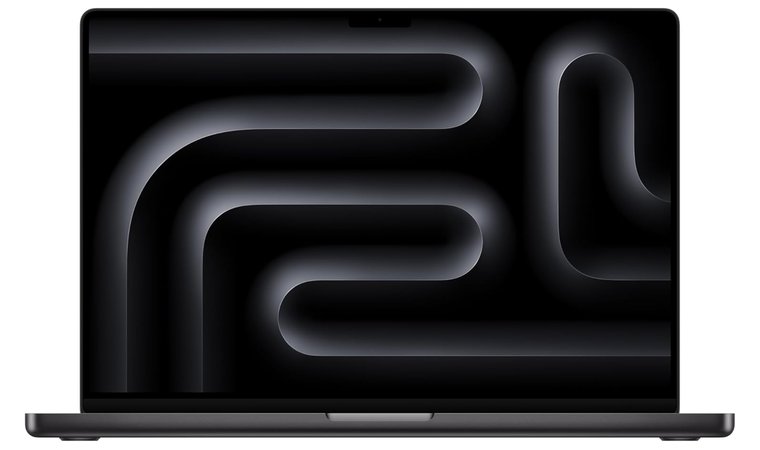
| Specs | Details |
|---|---|
| CPU | Apple M3 chip with 8-core CPU |
| GPU | 10-core integrated GPU |
| RAM | Up to 24GB unified memory |
| Display | 13.6-inch Liquid Retina (2560×1664) |
| Storage | Up to 2TB SSD |
| Battery | Up to 18 hours |
| Weight | 2.7 pounds (1.24 kg) |
When it comes to Apple laptops that punch way above their price, the MacBook Air (13-inch, 2024) stands out. It brings the powerful M3 chip to a machine that’s as light and fanless as it gets. As one of the best Apple laptops available now, this Air model blends power and portability perfectly.
Despite being a base model, you’ll find it more responsive than some newer laptops with louder fans and bulkier frames. For students or hybrid workers who just need a dependable daily driver, this one ticks all the right boxes.
You’re getting a smooth macOS experience without stretching your budget. It boots in seconds, keeps pace with work and school tasks, and offers a screen that looks sharp and true. This is one of those MacBook Air models that doesn’t feel like a compromise, especially considering the battery life which often reaches the 18-hour mark in daily use.
And thanks to its silent operation, you can work in libraries, cafes, or on calls without being that person with a humming laptop.
Design-wise, it holds up. You get the same elegant aesthetic seen in the higher-end MacBook Pro models, plus extras like the MagSafe charging port and a unique sky blue color that gives it just the right pop.
| Pros | Cons |
|---|---|
| ✅M3 chip delivers snappy, reliable performance ✅Battery life holds strong for school or work ✅Bright Retina display with wide color coverage ✅Fanless, silent design ✅Sleek build mirrors premium MacBook Pro models | ❌ External display support is limited to one screen |
Final Verdict: The 2024 Apple MacBook Air is one of the easiest ways into the MacBook models lineup without missing the good stuff.
3. Apple MacBook Pro (16.2 Inch, M4 Max, 2024) [Most Powerful]
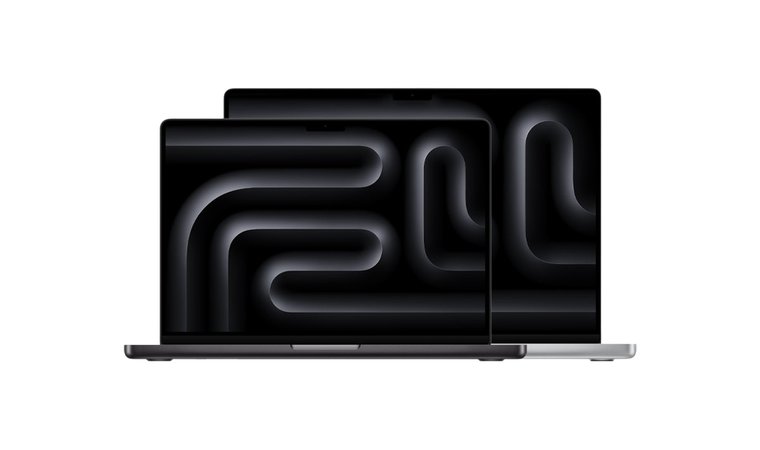
| Specs | Details |
|---|---|
| CPU | Apple M4 Max chip with 14-core CPU |
| GPU | 40-core integrated GPU |
| RAM | Up to 128GB unified memory |
| Display | 16.2-inch Liquid Retina XDR (3456×2234) |
| Storage | Up to 8TB SSD |
| Battery | Up to 24 hours |
| Weight | 4.7 pounds (2.15 kg) |
This is the MacBook Pro built for serious pros. The M4 MacBook Max chip inside this 16.2-inch beast delivers power that rivals full desktops. If you want zero compromises, this is your machine.
It’s ideal for engineers or video editors who routinely work with massive file sizes or complex codebases. Basically, if your job makes fans spin on a normal Windows laptop, this thing eats it for breakfast.
With up to 128GB of RAM and 8TB of SSD storage, it smashes through tasks that leave most laptops wheezing. It handles multi-layer timelines and heavy workflows with ease. The Liquid Retina XDR display is stunning with exceptional contrast and color precision.
And yes, it natively supports Apple Intelligence tools, which adds another layer of power to workflows from music making and video editing to coding.
It manages incredible battery life, rated for up to 24 hours. That’s longer than some lightweight machines. You could take this to a full-day recording or conference without needing to plug in, which is wild for a machine this powerful.
While MacBooks aren’t typically built for high-end gaming, the M4 Max comes closer to some of the best gaming laptops.
| Pros | Cons |
|---|---|
| ✅Unmatched power from the M4 Max chip ✅Stunning XDR screen made for photo and video editing ✅Top-tier battery life despite intense performance ✅Handles large creative or scientific workloads with ease ✅Doubles as a Mac Studio replacement ✅Sleek design despite being a high-performance workstation | ❌ It’s heavier and more expensive than most MacBook Pro models |
Final Verdict: If you need the best MacBook for gaming, this MacBook Pro is the one to get.
4. Apple MacBook Pro (16.2 Inch, M4 Pro, 2024) [Best for Long Battery Life]
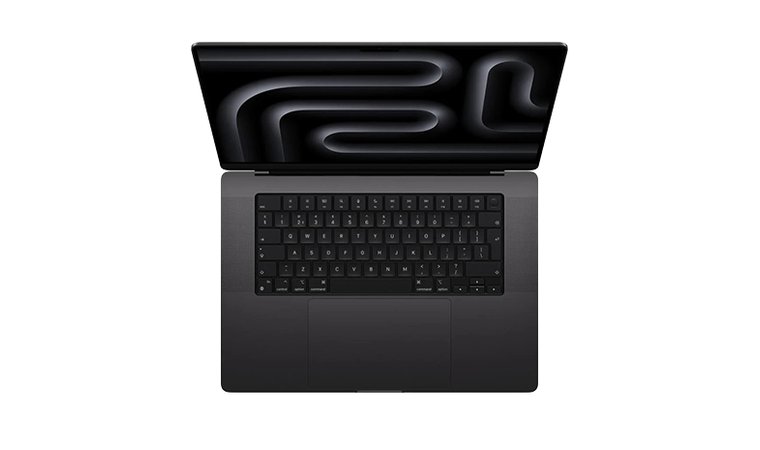
| Specs | Details |
|---|---|
| CPU | Apple M4 Pro chip with 12-core CPU |
| GPU | 18-core integrated GPU |
| RAM | Up to 36GB unified memory |
| Display | 16.2-inch Liquid Retina XDR (3456×2234) |
| Storage | Up to 4TB SSD |
| Battery | Up to 22 hours |
| Weight | 4.7 pounds (2.15 kg) |
This 16.2-inch MacBook Pro with M4 Pro chip was made for the creative professional who needs a larger screen and serious longevity. The M4 Pro chip gives you fast multicore performance and a strong 18-core GPU, super great for rendering and compiling. Apple claims up to 22 hours of runtime, and in real-world tests, it gets close.
Despite its size, it runs cool and quiet. You’ve got multiple USB C ports, a high-brightness HDR display, and rock-solid build quality across the board. It’s also a much better deal than jumping to M4 Max if you don’t need the extreme GPU load. Unlike a Mac Mini, this is a portable pro-grade machine you can rely on wherever you are.
This MacBook Pro supports up to two external displays, handles virtual machines smoothly, and is ideal for video editors and software engineers who need sustained performance over time.
| Pros | Cons |
|---|---|
| ✅M4 Pro delivers strong multitasking and GPU performance ✅Great battery life that lasts all day on a single charge ✅Gorgeous XDR display with HDR support ✅Handles intense workloads with minimal fan noise ✅Great port selection including USB C ports | ❌ Heavier than other MacBook models; this is not an ultrabook |
This is honestly one of the best MacBook Pro choices if you want lasting power, pro-level performance, and a larger screen that doesn’t cut corners.
5. Apple MacBook Pro (14 Inch, M4, 2024) [Best Upgrade Pick]
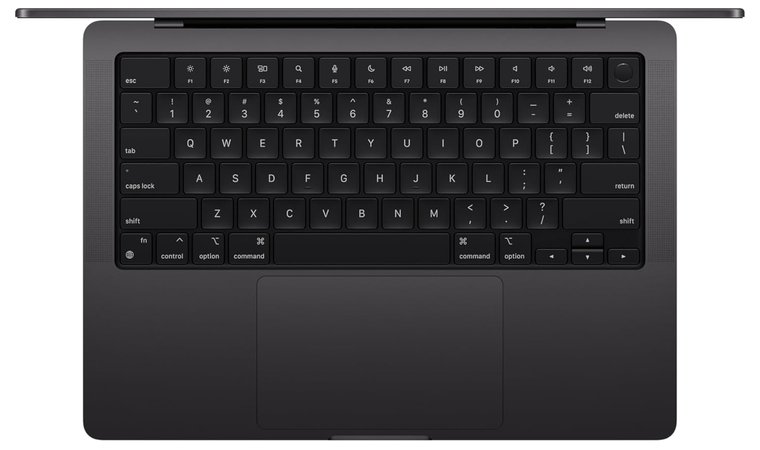
| Specs | Details |
|---|---|
| CPU | Apple M4 chip with 10-core CPU |
| GPU | 10-core integrated GPU |
| RAM | Up to 36GB unified memory |
| Display | 14.2-inch Liquid Retina XDR (3024×1964) |
| Storage | Up to 2TB SSD |
| Battery | Up to 18 hours |
| Weight | 3.5 pounds (1.60 kg) |
The 14-inch MacBook Pro with base model M4 is a huge upgrade over both older Airs and previous Pros. If you want the best MacBook to buy for mid-range power and portability, this one’s it. You’re getting smooth performance and premium build without paying for higher-end chips you may not need.
It’s built for professionals who want speed, stability, and a crisp HDR screen in a compact footprint. The M4 Pro chip still handles demanding everyday tasks from 4K video playback and dev work to working with design tools with ease. Plus, the inch MacBook Pro form factor gives you active thermal management; such a win for long-term performance.
Apple claims up to 18 hours of battery life, and this model actually gets close. You can comfortably run multiple creative tools, virtual desktops, and even Xcode simulators without the fans kicking up loudly. It’s also one of the few MacBook models with this much power in a size that still fits in a small bag.
The speakers and mic array are also impressive, which is perfect if you’re on calls, streaming, or editing audio directly from the device.
| Pros | Cons |
|---|---|
| ✅Sharp, color-accurate Liquid Retina XDR screen ✅Cool and stable even under moderate pressure ✅Ideal for creative tools, productivity, and remote work ✅Compact form factor without sacrificing ports or power ✅Fans stay low even during heavy workloads | ❌ Heavier than other MacBook models; this is not an ultrabook |
Final Verdict: This MacBook Pro is a great pick if you want pro-level power in a size that won’t weigh you down.
6. Apple MacBook Air (15-inch, M4, 2025) [Best Large Screen]
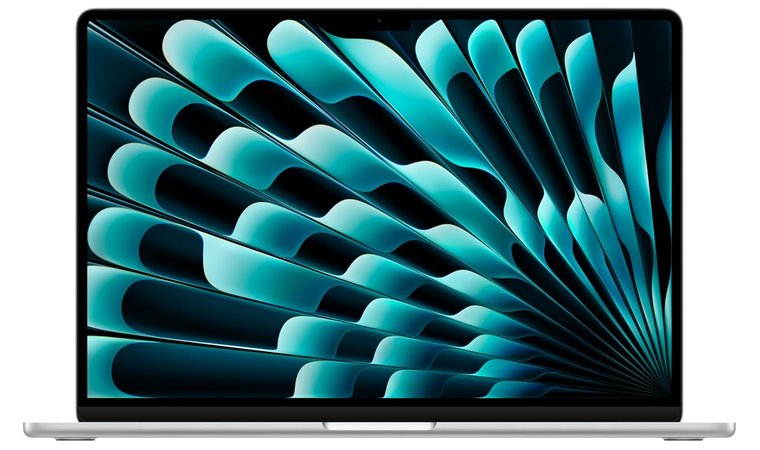
| Specs | Details |
|---|---|
| CPU | Apple M4 chip with 10-core CPU |
| GPU | 10-core integrated CPU |
| RAM | Up to 32GB unified memory |
| Display | 15.3-inch Liquid Retina (2880×1864) |
| Storage | Up to 2TB SSD |
| Battery | Up to 18 hours |
| Weight | 3.3. Pounds (1.51 kg) |
If you want a larger screen without the weight of a Pro model, the 15 inch MacBook Air is the move. It keeps the same ultra-thin profile and fanless build as the 13-inch, but stretches everything out for more space and better immersion.
The display is a standout; it’s bright and sharp. You’ll appreciate the extra real estate whether you’re editing media or multitasking with split-view apps. Thanks to the M4 MacBook chip, you’re getting enough muscle for everyday tasks and light creative work with no stutter.
Apple claims 18-hour battery life, and it stays cool even after long usage. For a 15 inch MacBook Air, this machine feels balanced (lightweight but still powerful).
It supports fast charging through the MagSafe charging port, and the speakers fill a medium room comfortably. Plus, the sky blue color adds flair to an otherwise minimalist package.
| Pros | Cons |
|---|---|
| ✅Spacious larger screen for creative and daily use ✅Fast M4 MacBook performance for the size ✅No fans = silent, distraction-free work ✅Sleek and modern design with long-lasting battery life ✅Sky blue color is available | ❌ Still capped at a single external monitor unless using adapters |
Final Verdict: If you’re all about screen size, silence, and smooth performance in a super portable frame, this 15-inch Air is probably the best pick for you.
7. Apple MacBook Air (M1, 2020) [Cheapest]
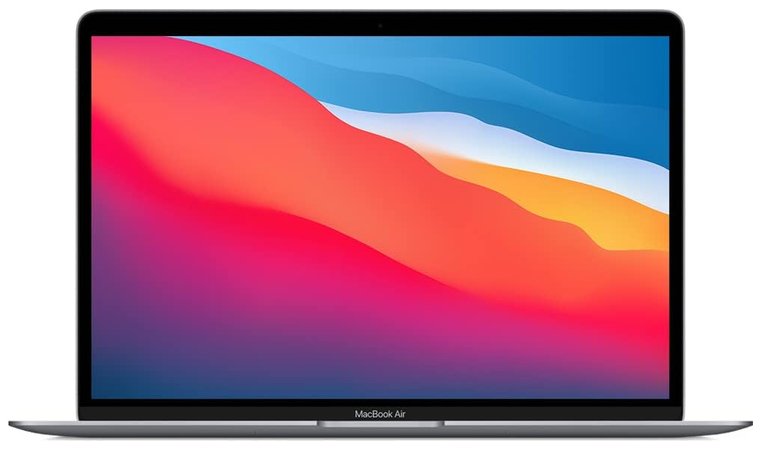
| Specs | Details |
|---|---|
| CPU | Apple M1 chip with 8-core CPU |
| GPU | 7-core integrated GPU |
| RAM | 8GB or 16GB unified memory |
| Display | 13.3-inch Retina (2560×1600) |
| Storage | Up to 2TB SSD |
| Battery | Up to 18 hours |
| Weight | 2.8 pounds (1.29 kg) |
This older model still holds up. The MacBook Air (M1, 2020) remains one of the most popular MacBook models ever made and for good reason. It’s dependable and far more capable than the price tag suggests.
Even now, it still supports the latest macOS updates. The Touch ID fingerprint sensor is built in, which makes logins and purchases simple and secure. You can browse, stream, write, and edit without lagging. Apple claims 18 hours of battery life, and it comes surprisingly close in light workloads.
Performance-wise, the M1 chip still handles web-based apps and productivity tools like Google Docs and JIRA without stuttering. If your daily work is mostly browser-driven, this laptop stays smooth and efficient even with multiple tabs open.
For everyday tasks, this is still a reliable laptop. It’s a smarter buy than many Windows laptop options in the same price range.
Although the M1 MacBook Air is Apple’s cheapest option, there are more budget-friendly alternatives beyond the Mac lineup. See our roundup of the best budget laptops for gaming, school, and work.
| Pros | Cons |
|---|---|
| ✅Quiet, fanless design that still runs fast ✅Lightweight and travel-friendly ✅Solid Retina display with sharp colors ✅Strong real-world battery life ✅Cheapest entry point into macOS | ❌ It only comes with just two USB C ports; you’ll likely need a dongle if you connect multiple accessories. |
Final Verdict: If you’re after a smooth Mac experience without dropping premium cash, the M1 Air still slaps in 2025.
Key Specs of MacBook When Compared to Others
Specs matter, but what makes a MacBook different isn’t just raw numbers. Apple’s laptops are built on custom hardware, unified architecture, and seamless software. Unlike most Windows laptop options, these machines rely on tightly integrated features that make them feel smoother and more responsive in day-to-day use.
1. Apple Silicon [M-series Chips]
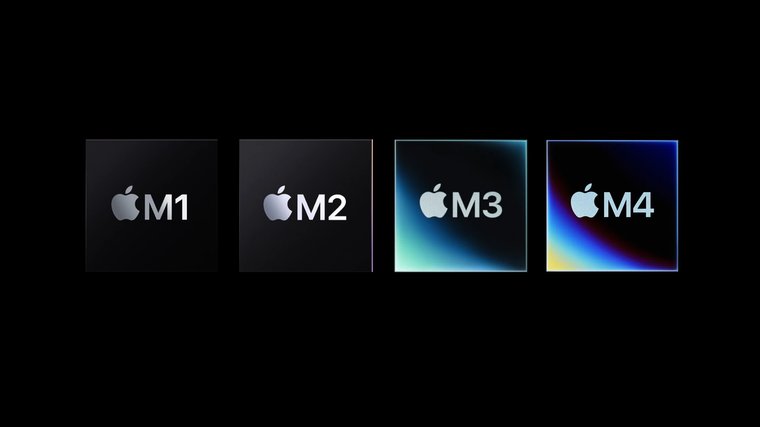
Apple’s M4 MacBook chips (and the M1, M2, and M3 that came before them) are real game-changers. Unlike x86 CPUs in most PCs, these chips are ARM-based and purpose-built for Apple laptops that blend raw power and efficiency in a way that traditional designs can’t replicate.
These chips pack performance and efficiency cores, GPU cores, Neural Engines, and media engines all on the same chip. That unified architecture allows faster access between components, eliminating the need for large power draw or excessive memory transfer. Apple claims this design helps MacBooks achieve better performance using less power.
You also get faster wake times, ultra-quick app launches, and smoother transitions between apps, even when the system’s under load. That’s because the operating system and silicon were designed together, not retrofitted like most Windows laptop setups.
You’ll notice it when juggling browser tabs, working with website-based applications, or rendering graphics. MacBooks with M-series chips stay responsive. The latest M4 MacBook models push things even further with more GPU cores and support for native Apple Intelligence tools.
And as macOS evolves to support more AI-powered features, having Apple Silicon ensures compatibility and headroom. With Apple Silicon, you’re getting future-ready hardware that keeps up as macOS and AI capabilities continue to evolve.
Each chip tier, regardless of whether you’re on a base model or going for M4 Max, offers tangible improvements. Apple offers this scalable range so you can find the best Apple laptop for your needs, no matter if you’re a student or a creative professional.
2. Unified Memory [RAM]
Instead of traditional RAM modules, MacBook Air models and MacBook Pro units use unified memory. This means the CPU, GPU, and Neural Engine share the same high-bandwidth, low-latency memory pool.
It helps you when you’re multitasking a lot, like juggling music, Zoom, Chrome tabs, and editing all at once. Even the base models don’t stutter when jumping between windows.
The result? Data doesn’t have to be duplicated or moved across different memory systems. That architecture allows even base model configurations to feel snappy.
Unified memory makes every gigabyte count. For example, 16GB of unified memory in a MacBook Air will often outperform 32GB of standard RAM in a traditional Windows laptop, especially under creative workloads.
And because the memory is built into the chip itself, you get lower power consumption and better thermal efficiency. It’s one of the reasons MacBook models offer such longer battery life.
Also, Mac gaming has come a long way, especially with native support through Apple Silicon. If you’re looking to get the most out of your machine, don’t miss our list of the best Mac games available in 2025.
Unified memory keeps your MacBook Air or Pro running smoothly without maxing out.
3. Liquid Retina / Liquid Retina XDR Displays
From standard Liquid Retina to the stunning XDR panels on the MacBook Pro, the screens on Apple Laptops are purpose-built for clarity and creativity.
You get wide color gamut (P3), high pixel density, and support for True Tone that adapts to ambient lighting. Apple claims up to 500 nits on standard Retina screens that keeps everything visible even in direct sunlight.
On MacBook Pro models with Liquid Retina XDR, things get brighter, literally. These screens reach up to 1600 nits of peak brightness, true HDR support, and incredibly deep blacks for contrast that makes content pop. It’s a must-have for creatives working in music production or HDR workflows.
For those who prefer a larger screen setup via HDMI or AirPlay, pairing your MacBook with one of the best gaming TVs can deliver immersive visuals. These are perfect for work and casual gaming.
And don’t forget ProMotion, Apple’s adaptive 120Hz refresh rate available on supported MacBook Pro models. It makes motion fluid, reduces eye strain, and doesn’t tank battery life thanks to smart refresh adjustment.
It’s this attention to display detail that helps Apple’s MacBooks stand apart from even the most spec-heavy rivals.
4. Ecosystem and Software Optimization
What makes the MacBooks truly shine is how macOS and Apple Silicon work together. This isn’t just a generic operating system with slapped-on drivers. Every transition and workflow is tuned for Apple’s chips.
You’re gonna feel it most in daily use; everything flows without random slowdowns.
This deep optimization leads to longer battery life and apps that just feel smoother. From Safari to Final Cut, and even third-party software, everything runs lean and stable.
But the real magic is the ecosystem. Use Sidecar to turn your iPad into a second screen. Send files over AirDrop. Operate your iPhone on your MacBook with iPhone Mirroring. No extra apps or setup needed. You don’t need to juggle devices, everything’s already synced and waiting.
If you prefer a more portable Apple device for gaming, the latest iPads offer surprising performance. Explore our top choices in the best iPads for gaming.
macOS updates are also lighter and more future-proof than what you’ll find on many Windows competitors. And with Apple Intelligence on the rise, native support in the latest M4 MacBook models will matter more than ever.
This synergy makes a base model MacBook more than a machine, it increases your daily productivity.
When compared to Windows laptops, MacBooks are prized for their elegant design, intuitive interface, and smooth integration within the Apple ecosystem, whereas Windows laptops, especially Surface devices, stand out for their greater customization options, broader software compatibility, and, in some cases, you may find the best Microsoft laptop to be of superior performance for specific tasks.
5. Build Quality and Design
There’s a reason people hang onto their MacBooks for years. The aluminum unibody design gives every machine a solid, high-end feel. It dissipates heat efficiently and ages well, which is exactly what you want in a MacBook for long-term use.
Even after years of work-from-cafe sessions and being tossed into backpacks, these machines rarely show wear beyond a few scuffs (proof that the build holds up).
You also get best-in-class input tools. The Force Touch trackpad is responsive and smooth, with tactile haptics that replicate click feedback precisely. The keyboard has been refined through the years and now offers satisfying travel without being loud.
Port-wise, MacBook Air models and MacBook Pro units are more streamlined now, but that doesn’t mean lacking. Some users may still miss HDMI or older USB-A ports, but adapters or hubs usually solve that quickly without adding much bulk.
Each detail reflects Apple’s focus on form and function. For creative pros, students, and everyday users, a MacBook is something you actually enjoy carrying and using.
With all that in one package, it’s clear why Apple laptops continue to lead the pack for anyone after the best MacBook experience.
FAQs
What is the best MacBook?
The best MacBook is the MacBook Air (13-inch, M4, 2025). It’s fast, fanless, super light, and delivers all-day battery life. It’s the perfect MacBook for work or study without overspending.
What is the best MacBook for college?
The best MacBook for college is the MacBook Air (13-inch, M3, 2024). It runs quiet, lasts long, and handles research and essays with ease (great for campus life).
Which MacBook Air should I buy?
The MacBook Air you should buy is the M4 MacBook Air if you want the latest features. But if you’re on a tighter budget, the M1 version still runs smooth for everyday use, with the same silent design and great build.
Is a MacBook worth it?
Yes, a MacBook is worth it. If you want a durable build and seamless macOS features, a MacBook’s a solid investment. It runs quietly, stays fast over time, and holds its value well. You’ll get a smooth, quiet experience that stays dependable for years, without losing value along the way.




